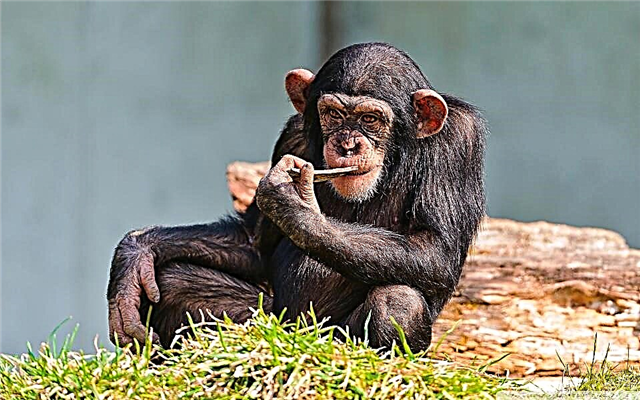Halloween is not just the favorite season of little ghosts and goblins that take to the streets, asking for sweets and scaring each other. This is the boundary line between autumn and winter, life and death, a time of fear and superstition.
Introducing you 5 weird halloween traditions.
5. Poisoned sweets
 The fear is that someone will put poison or razor blades in the treats that children collect on the eve of All Saints Day, “hailing” from a newspaper column. She was led by American journalist Abigail Van Buren in 1983. She reminded readers of the dangers of Halloween, when all sorts of sick people on the head try to harm neighboring children with the help of poisoned sweets.
The fear is that someone will put poison or razor blades in the treats that children collect on the eve of All Saints Day, “hailing” from a newspaper column. She was led by American journalist Abigail Van Buren in 1983. She reminded readers of the dangers of Halloween, when all sorts of sick people on the head try to harm neighboring children with the help of poisoned sweets.
When her sister, Anne Landers, repeated the statement 12 years later, the myth was firmly rooted in the minds of U.S. citizens. In Halloween, children began to eat sweets under the supervision of adults.
The first confirmed candy-related violence story for Halloween occurred in 2000. James Joseph distributed chocolates to the children into which he inserted needles.
4. Cabbage for fortune telling
 The last days of October and the first days of November are the time of spirits, the dead, and all supernatural. No wonder Halloween was considered a great time for magic.
The last days of October and the first days of November are the time of spirits, the dead, and all supernatural. No wonder Halloween was considered a great time for magic.
In the writings of Robert Burns (18th century), a strange rite of fortune-telling on Halloween was described. Instead of going to beg for sweets, single people of marriageable age should blindfolded pull cabbage.
Those who are connoisseurs in the cabbage,
Who is not looking for the first time,
Closing eyes, tearing roots
Big and straight.
The root gave information about the future spouse: short or tall, straight or crooked, healthy or wilted. A cabbage tasting hinted about whether sweet or bitter would be a family life with a chosen one. Even the amount of dirt on the spine mattered. A lot of dirt is good, as it meant getting a big dowry.
3. Fruits instead of sweets
 The sweet Halloween tradition of giving children sweets appeared only in the middle of the 20th century. Initially, small ghosts, witches and vampires were bought out with fruits, nuts, rolls, cakes, and small toys. The candy industry began to displace competitors from the Halloween market since the 1960s. Currently, Americans spend more than $ 20 million annually on Halloween sweets.
The sweet Halloween tradition of giving children sweets appeared only in the middle of the 20th century. Initially, small ghosts, witches and vampires were bought out with fruits, nuts, rolls, cakes, and small toys. The candy industry began to displace competitors from the Halloween market since the 1960s. Currently, Americans spend more than $ 20 million annually on Halloween sweets.
2. The sinister pumpkin
 The strange custom of making a pumpkin with luminous eyes for Halloween and the term “jack-o-lantern” or “Jack's lamp” itself came about thanks to an 18th-century Irish folk tale about a guy named Jack. He tricked the Devil himself: first he drank with him in a tavern, and then asked to turn around a coin to pay off. When the Unclean fulfilled the request, the cunning Irishman put the coin in his pocket, where the silver cross was. For his release, the lord of the underworld promised not to lay claim to Jack's soul and not to plot him a year.
The strange custom of making a pumpkin with luminous eyes for Halloween and the term “jack-o-lantern” or “Jack's lamp” itself came about thanks to an 18th-century Irish folk tale about a guy named Jack. He tricked the Devil himself: first he drank with him in a tavern, and then asked to turn around a coin to pay off. When the Unclean fulfilled the request, the cunning Irishman put the coin in his pocket, where the silver cross was. For his release, the lord of the underworld promised not to lay claim to Jack's soul and not to plot him a year.
Subsequently, the Irish booze once again deceived Satan, asking him to climb onto the apple tree for the fruits, and then quickly scratching the cross on the tree. When Jack died, his soul was not allowed into Heaven for meanness. But the vindictive Devil did not allow him to bask at the fires of Hell. Thus, Jack was forced to roam the world endlessly. In the end, the Devil took pity on him and gave a piece of coal to illuminate the road. And the wanderer put the coal inside the hollowed pumpkin. It was believed that a fruit with burning "eyes" left on Halloween near the house would not allow evil spirits to harm its residents.
1. All Saints Day
 The first place in the top 5 strange stories about the ancient traditions of Halloween went to the holiday, which was created by Pope Boniface IV in the 7th century AD. e. There were so many saints at this time that there were not enough days in the year to “accommodate” them. I had to create a special day for honoring the righteous without their own day, as well as miracle workers, whom the church did not officially recognize. Initially, the Day of All Saints (or rather the Mass of All Saints, All hallow ees) was celebrated on May 13, but in 835 Pope Gregory IV “moved” it to November 1. Perhaps in this way the Catholic Church tried to distract Christians from the celebration of Samhain.
The first place in the top 5 strange stories about the ancient traditions of Halloween went to the holiday, which was created by Pope Boniface IV in the 7th century AD. e. There were so many saints at this time that there were not enough days in the year to “accommodate” them. I had to create a special day for honoring the righteous without their own day, as well as miracle workers, whom the church did not officially recognize. Initially, the Day of All Saints (or rather the Mass of All Saints, All hallow ees) was celebrated on May 13, but in 835 Pope Gregory IV “moved” it to November 1. Perhaps in this way the Catholic Church tried to distract Christians from the celebration of Samhain.












